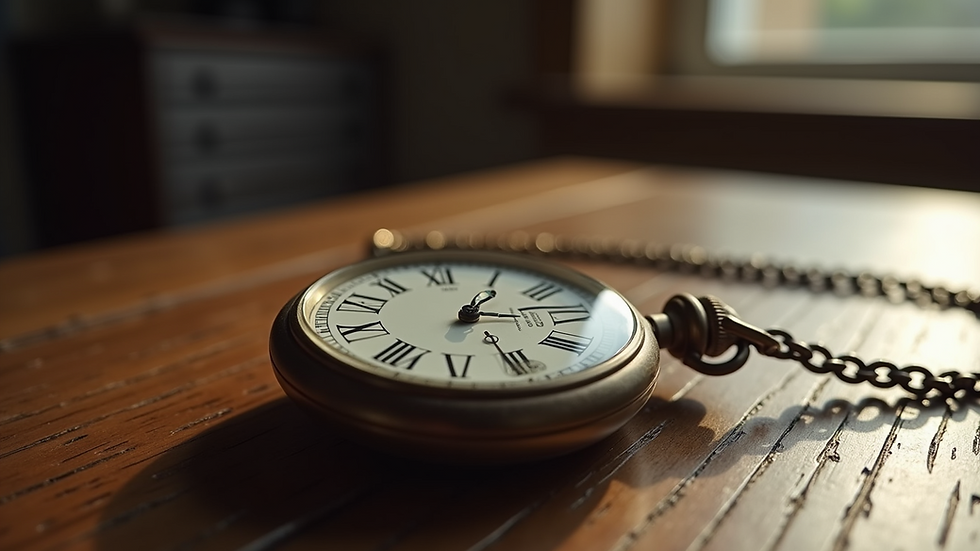Pawning 101: The Lowdown on How Pawn Loans Work and What You Need to Know
- Adrian Sauvageot
- Aug 13
- 4 min read
Pawning can be a straightforward and effective way to access funds. It’s not just for desperate situations; many people use pawning as a convenient option for managing unexpected expenses. This post will detail how pawn loans work, explain the significance of collateral, and highlight the key differences between pawning and selling items.
What is a Pawn Loan?
A pawn loan is a short-term financial arrangement where you borrow money by using a valuable item as collateral. Unlike traditional loans, you won’t have to undergo a credit check or endure a lengthy approval process. Instead, the pawn shop evaluates your item and offers a loan amount based on its assessed value. The loan is typically for a portion of the value of an item, typically 20-30% of what an item retails for.
The loan terms usually span 30 days. If you repay the loan before the 30 days, you can reclaim your item. If you decide against paying the loan back the pawn shop has the right to sell your item to recoup their investment. Some pawn shops, like Hock Stars, also allow you to make a small payment every 30 days to hold your loan over for another 30 day period.
How Does Collateral Work?
Collateral is an essential aspect of a pawn loan. It is the item you use to secure the loan. Common items used as collateral include:
Jewelry (like gold necklaces or diamond rings)
Electronics (such as laptops or TVs)
Musical instruments (like guitars or violins)
Collectibles (including trading cards or rare coins)
When you bring an item to the pawn shop, a pawnbroker will assess its condition, market demand, and resale value. They often base the loan offer on 20% to 30% of the item's retail value, ensuring they can cover their costs if needed. Once you accept the loan terms, you receive cash immediately while the pawn shop keeps your item safe. If you do not repay the loan, they can sell the item to cover the outstanding loan.
The Pawn Loan Process: Step-by-Step
Step 1: Choose Your Item
Start by identifying an item of value you can use as collateral. Make sure it is something you can part with temporarily until the loan is repaid, as you’ll need it back.
Step 2: Visit the Pawn Shop
Take your item to a local pawn shop. To avoid unnecessary trips, it’s wise to call ahead and confirm they accept your type of item.
Step 3: Get an Evaluation
At the pawn shop, the pawnbroker will evaluate your item. They will check for authenticity, functional condition, and overall market demand. This evaluation typically takes only a few minutes.
Step 4: Receive a Loan Offer
Following the evaluation, the pawnbroker will make a loan offer, detailing the loan amount, fees, and repayment terms.
Step 5: Complete the Transaction
If you agree to the loan offer, you will sign a pawn ticket, outlining the terms and your rights. You will walk away with cash, while the pawn shop securely stores your item.
Step 6: Repay the Loan & Reclaim Your Item
To reclaim your item, pay back the loan amount along with any fees by the due date. If you cannot repay, the pawn shop will retain your item and may sell it.
Pawning vs. Selling: What’s the Difference?
Pawning and selling items may seem similar, but they are fundamentally different. When you pawn an item, you get a loan against it, allowing you to reclaim it by repaying the loan. This process suits those who need cash quickly but still want to keep their belongings.
Conversely, when you sell an item, you are transferring ownership to the pawn shop. You receive immediate cash, but you cannot get the item back. Selling may be a better choice if you no longer wish to keep the item and need quick cash.
Advantages and Disadvantages of Pawn Loans
Advantages
Quick Cash: Pawn loans offer immediate cash without requiring credit checks.
No Long-Term Commitment: Typically short-term loan agreements make this option flexible for addressing temporary financial needs.
No Recourse Loan: If you decide not to pay back the loan, the pawn shop keeps your item, and the loan is considered paid. There is no impact beyond the loss of collateral.
Opportunity to Reclaim: Once the loan is repaid, you can regain your valuable belongings.
Disadvantages
Risk of Losing Your Item: If you fail to repay the loan, you risk losing your collateral permanently.
Limited Loan Amounts: Your loan is limited to a portion of the item’s retail value, making it essential to choose valuable items wisely.
Final Thoughts
Pawning can serve as an effective solution for quick cash needs. Understanding how the process functions and the importance of collateral is key. Using your valuables wisely can help you navigate unexpected financial hurdles. Always consider the loan terms and any potential risks involved. Whether you opt to pawn or sell, being informed will help you make the best choice for your financial situation.
Have additional questions? We are always happy to help, stop into your local Hock Stars for more information, for a no obligation assessment of an item, or just to have a chat about how Pawns work!



